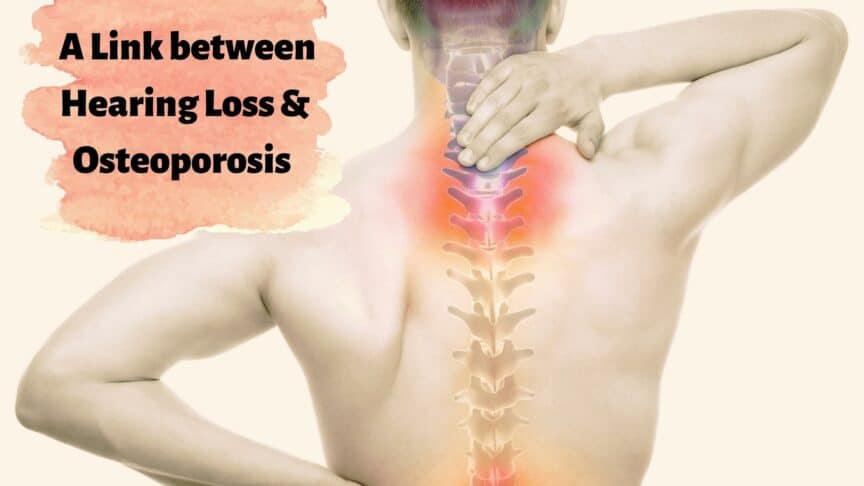Osteoporosis can double the risk of developing hearing loss. Studies show that there is a significant correlation between both conditions which impact older adults disproportionately. If you have osteoporosis, it is important to practice safety measures that protect your hearing health!
What is Osteoporosis?
Osteoporosis is a medical condition that is characterized by weakened bones. It develops as a result of the body’s capacity to replace old bone tissue (a process that is always happening) with new bone tissue being reduced. The slowing down of this bone renewal process leads to lower bone mass which makes bones fragile, increasing the likelihood of fracture or breakage. The most common osteoporosis-related fractures happen in the wrists, spine, and hip.
The International Osteoporosis Foundation estimates that 44 million people live with osteoporosis or low bone mass. People typically do not experience symptoms or do not become aware of their osteoporosis until they experience an injury caused by it. Osteoporosis can contribute to chronic pain, lead to issues with mobility, and increase the risk of developing other conditions including hearing loss.
Link Between Hearing Loss & Osteoporosis
Research shows that osteoporosis can significantly contribute to sudden sensorineural hearing loss (SSHL). This type of hearing loss, also referred to as sudden deafness, occurs rapidly (at once or over just a few days) and typically in one ear. SSHL usually results from injury or damage to the sensory organs in the inner ear. According to the National Institutes of Health, nearly 50% of people who experience SSHL will recover some or most of their hearing spontaneously.
Studies have shown that there is a correlation between osteoporosis and hearing loss. This includes a 2015 study published in The Journal of Clinical Endocrinology & Metabolism. Examining this relationship, researchers at the Chi Mei Medical Center in Taiwan collected and analyzed data from a national health database on patients with and without osteoporosis. This included 10,660 people with diagnosed osteoporosis and 31,980 people with the condition. Researchers found that:
- People with osteoporosis were 76% more likely to develop sudden sensorineural hearing loss
- Women with osteoporosis were 87% more likely to develop SSHL compared to men
These key findings reveal that osteoporosis can be a significant risk factor that drastically increases the chances of developing impaired hearing.
How Osteoporosis Impacts Hearing
To understand how osteoporosis can affect hearing health, it is important to know about the auditory system – the sensory system that manages to hear. The ears and brain work together to absorb and process sound. This process includes:
- Outer ear: consists of the outer cartilage which absorbs sound from the environment. Soundwaves then move through the ear canal and land on the eardrum, creating vibrations.
- Middle ear: this movement activates the ossicles – three connected bones, among the smallest in the body – which help push the soundwaves further into the inner ear.
- Inner ear: the cochlea is filled with thousands of hair cells that are responsible for converting the incoming soundwaves into electrical signals. These signals travel through auditory pathways to the brain where they are further processed and given meaning. This is what allows us to understand what we hear.
Osteoporosis, affecting bone health, can impact the bones in the ear including the ossicles. These bones are integral to receiving and propelling incoming soundwaves so when this process is disrupted, it can lead to hearing loss.
Protecting Your Hearing Health
If you have osteoporosis or lower bone mass, it is incredibly important to prioritize your hearing health. There are several safety measures you can integrate to protect your hearing including:
- Hearing test: having your hearing regularly assessed is a great way to identify and track your hearing needs. Hearing tests involve a noninvasive and painless process that measures your hearing capacity in each ear. This identifies any hearing loss and the degree of impairment you could be experiencing.
- Wear protective gear: loud noise is a common cause of hearing loss. One-time or consistent absorption of loud noise can damage the hair cells in the inner ear. Wearing protective gear – headphones, earplugs, earmuffs, etc. – is a useful way to create a protective barrier for the ears. This reduces the amount and impact of loud noise that you absorb.
Early detection and treatment can transform your health so don’t wait. Call us today to schedule an appointment for a hearing test!

